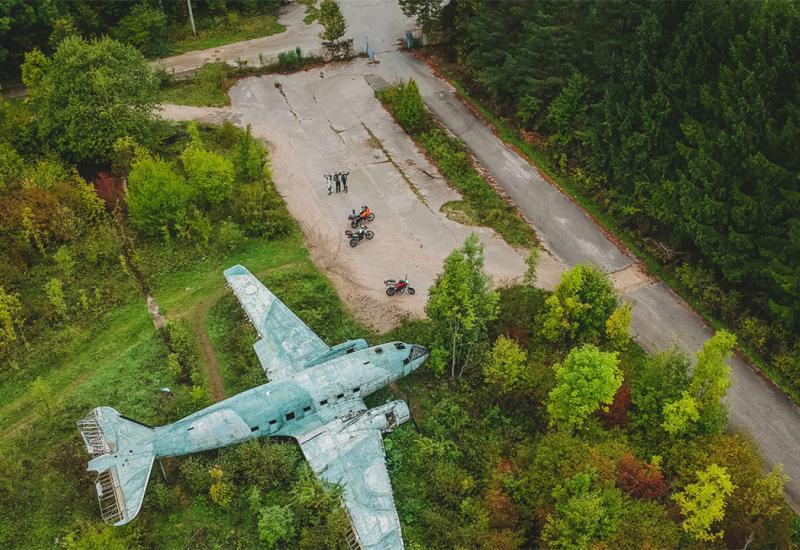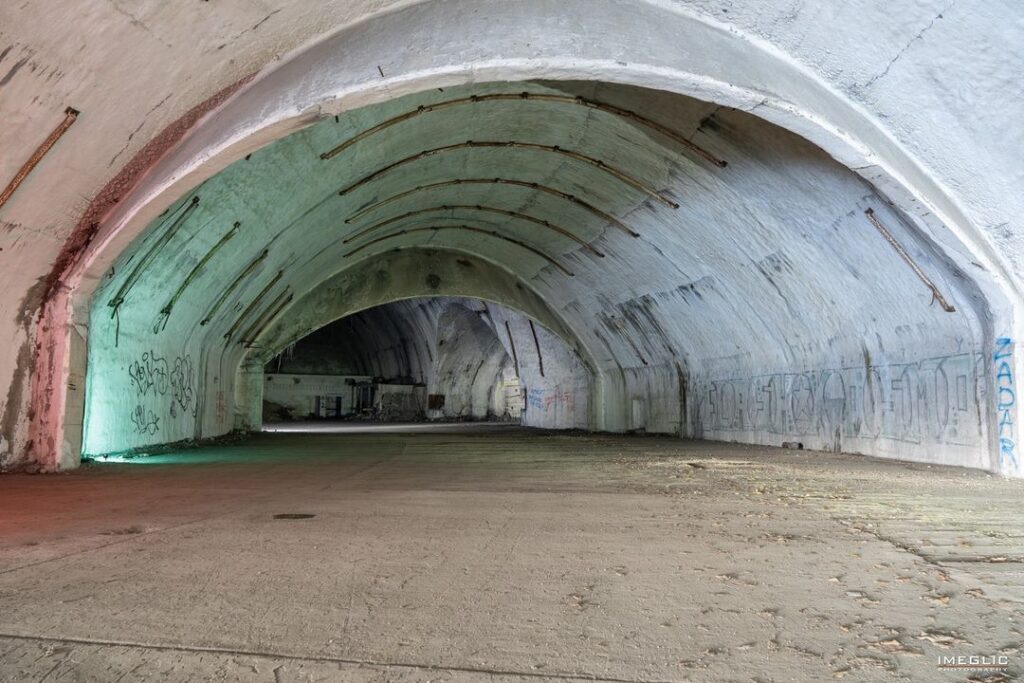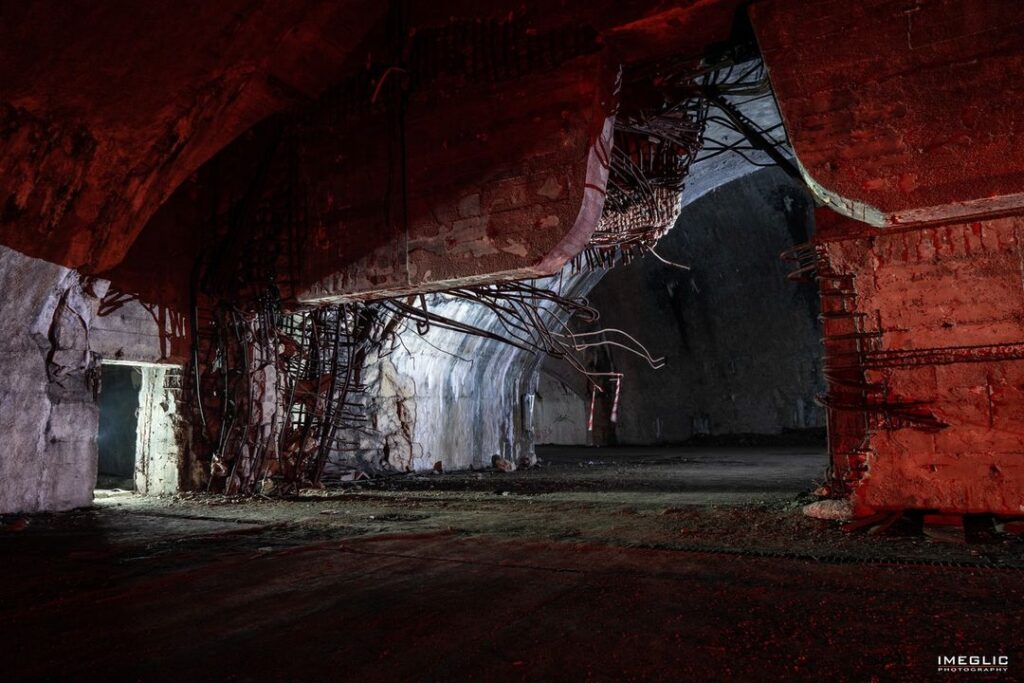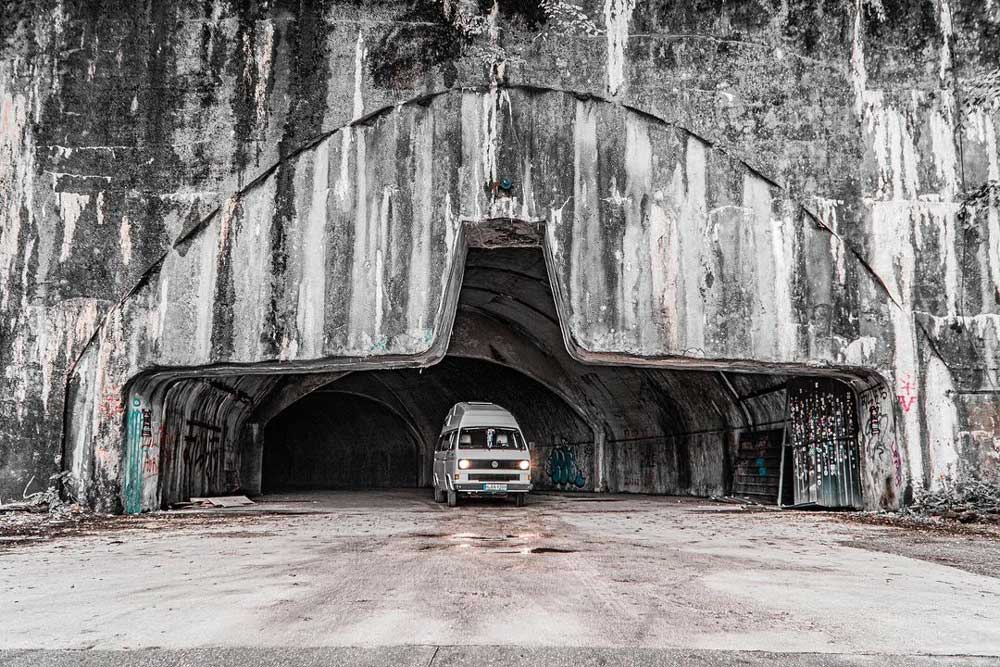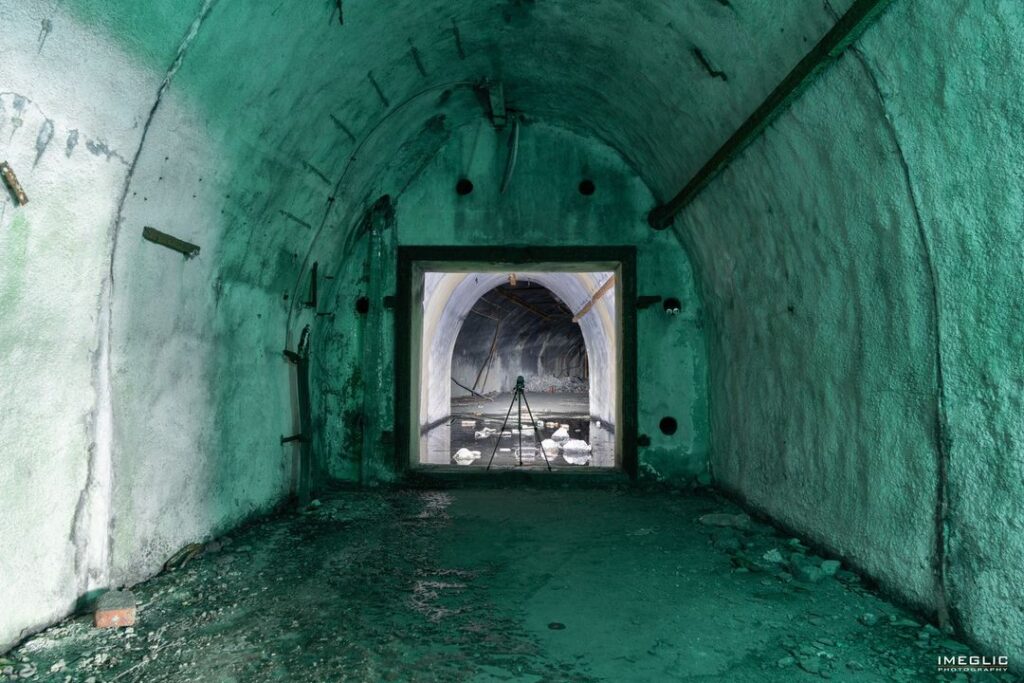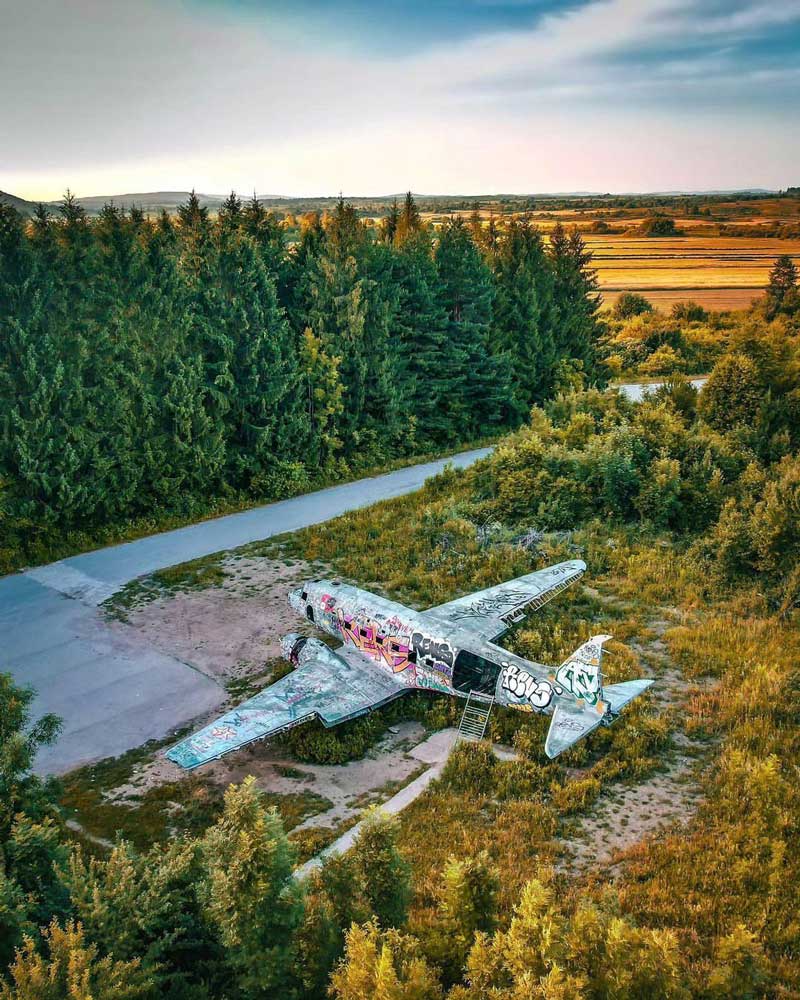Račić bb, Bihać, BiH
+387 63 14 14 14
japodskiotoci@gmail.com
The military underground airport and complex Željava was built in 1960 during Yugoslavia. Built in complete secrecy, it was one of 2 active military airfields in Yuga. It was built during the Cold War when there was great fear of an attack with atomic weapons. Strategically positioned, it served for defense and air surveillance of the territory, but also a place that is hidden from radar views from the West!
Today, this place impresses visitors with its size, secrecy, but also with the idea of how it was built. If you plan to visit this airport, allow at least 2 hours of time.
One visitor said: "This is how an American would feel walking around Area 51!"
The airport is mostly located in the Republic of Croatia, while 2 runways are on the territory of Bosnia and Herzegovina in the direction of the city of Bihać. The entire Klek 505 military complex can be divided into 3 units: barracks, tunnels and runways.
Barracks are located at the very entrance to the military complex, right next to the village of the same name, Željava. In the initial part, there are ten buildings that served as a command center, barracks, classrooms, mechanics' workshops, generators, a kitchen, etc. There are also playgrounds and training grounds for employees in the yard of the barracks.
Tunnels are 3 km from the barracks and a total of 4 entrances to the mountain have been built. The entrances were built in the shape of a Mig 21 airplane. In the interior of the Plješivice mountain, all the tunnels are interconnected and you can get anywhere from any tunnel. In addition to the main tunnels where the planes were located, dozens of smaller tunnels and rooms were excavated in Plješivca, which were used for the operation and management of the airport, but also as a place of residence for employees in case Željava is attacked with atomic weapons.
Runways are built at the very exits from the tunnel and are interconnected. There are runways for takeoff and landing, and there are auxiliary runways next to them. Next to the runways, a missile defense system was installed, which served to defend the entire airport.
The official name of this military complex and base is Klek object 505.
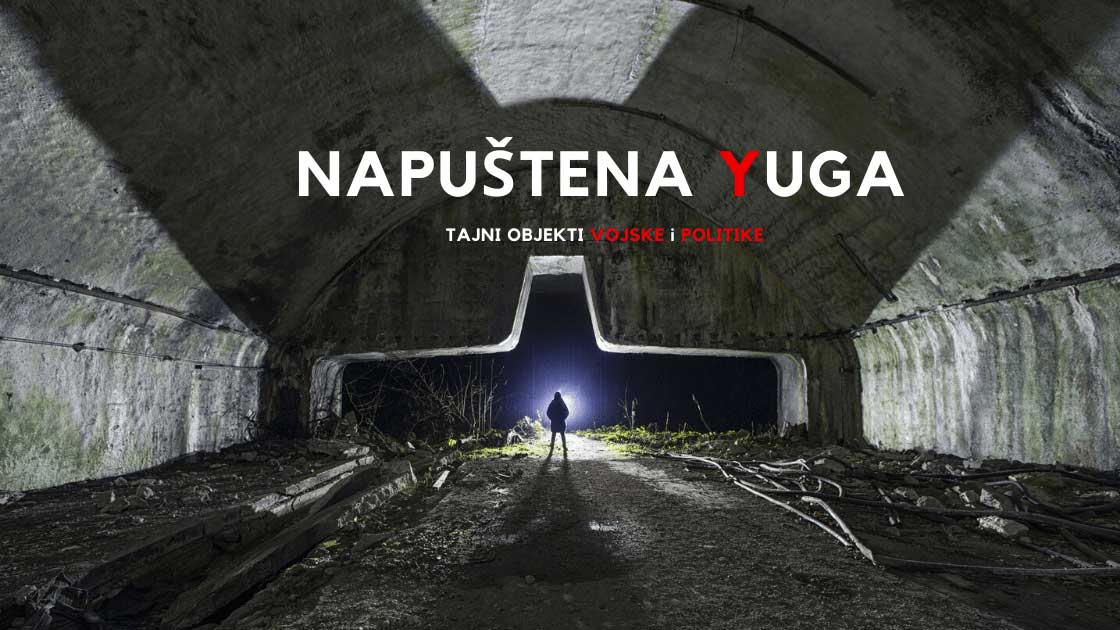
Underground airport infrastructure
In order for the entire military airport to be independent, numerous facilities were built for the airport's self-sufficiency. Thus, there is a water source with a pumping station near the barracks. Jet fuel was stored at the airport itself, but a separate tank complex was also built, which was more than 10 km away not far from Bihać. The complete oil pipeline was built according to the highest standards in order to withstand the impact of aerial bombs. Also, in the complex itself, there is a power plant for the production of electricity. The supervision of the entire area (runway, entrance and barracks) was carried out from the nearby Čelopek hill where the command center was located and from where there was excellent visibility over the entire area, all the way to Bihać. Above the entrance to the tunnels was an additional control center with a direct view of the runways themselves.
Fully autonomous ventilation was built in the tunnels themselves, which served to maintain ideal conditions for people's stay and the storage of MIGs. Ventilation was built in the vaults of the tunnel, and it also served as an additional exit in case of need. The entire infrastructure (water, electricity, telecommunications, etc.) is buried and passes through tunnels. As the airport is abandoned and damaged, the infrastructure channels in question pose a risk of falling into open holes/shafts.
How and why was the airport destroyed?
Željava Airport was destroyed at the request of Belgrade during the withdrawal of the JNA. The withdrawal of the army was a decision aimed at preventing military weapons from falling into the hands of Croatian and Bosnian soldiers, but also valuable infrastructure (runways, tunnels, barracks, radars...)
When leaving the airport, the JNA planted explosives inside the tunnels and on the runways. The force of the detonation can be seen in the command center inside the tunnel (Star), at entrances 1, 2 and 4, and at the junction of tunnels 1 and 2.
Radioactivity in tunnels
Is Željava airport radioactive? A common question or myth that interests all visitors. According to official analyses, there is no radioactivity in the tunnels. Whether the story about radioactivity was created to arouse additional curiosity or something else, judge for yourself.
Airplane Douglas C 47 Zeljava
At the very entrance to the base is a Douglas plane. The plane was originally used for the transport and landing of paratroopers, and Tito received it as a gift after the end of World War II. World War. Douglas planes are still used in Africa today to transport goods. According to airplane connoisseurs, this airplane is excellently made and with simple mechanics, it has its purpose even after 70 years! The plane at the very entrance to Željava was completely preserved until the withdrawal of the JNA from the base. It is a very popular stopping place because the photos in front of the plane are impressive. You can also look around the interior of the plane and sit in the cockpit to take a perfect selfie.
Željava Military Airport is located 23 km from the Japod Islands or a 30-minute drive.
Documentary about Željava
Documentary film "Houston we have a problem!" unravels the story of development of the Yugoslav space program which was created in the tunnels of Željava. This Cold War story is full of plot and intrigue. The testimony of an employee of Željava takes us through the story of how Tito sold the space program to American President F. Kennedy. What intrigues, lies and manipulations are behind the price for the USA to overtake the USSR in the development of space vehicles and what happened, see in the documentary "Huston we have a problem!"
The documentary is the work of Slovenian director Žiga Virac, which was created in 2016, after which the popularity of this place exploded.

Trailer of the movie "Houston we have a problem"
Text author: oreskovic-plitvice.com
Explore accommodation options on the Japod Islands
Looking for a quiet place to relax in beautiful natural surroundings?
Accommodation
Address
Račić bb, 77000 Bihać,
Bosnia and Herzegovina
telephone
+387 63 14 14 14
©2023 Japodski otoci
Srce nature doo

